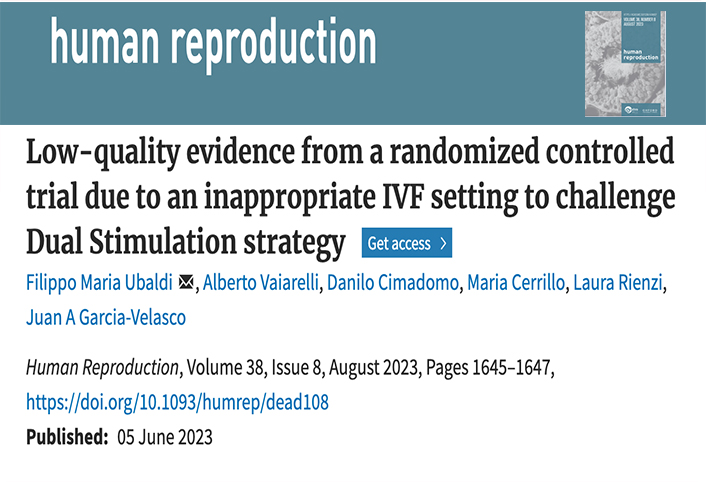
Filippo Maria Ubaldi, Alberto Vaiarelli, Danilo Cimadomo, Maria Cerrillo, Laura Rienzi, Juan A Garcia-Velasco
Extract
Sir,
We read with great interest the article ‘The BISTIM study: a randomized controlled trial comparing dual ovarian stimulation (Duostim) with two conventional ovarian stimulations in poor ovarian responders undergoing IVF’ by Massin et al. (2023). Although the authors conducted a randomized controlled trial (RCT) to compare (their) standard care approach with dual stimulation in the same ovarian cycle, their analysis is severely biased in our view and rather unfair with respect to the true value and need for this unconventional stimulation strategy. We summarized some considerations hereafter.
First, with their study design, the authors are not only comparing two ovarian stimulation strategies but also two completely different settings such as fresh oocyte insemination versus oocyte accumulation via vitrification and fresh versus vitrified-warmed first embryo transfer strategy. Moreover, the study, limited in its sample size, is multicentric and the oocyte vitrification performance (cryo-survival rate: 81.6%) is below the benchmark value at reference centers. This is already a matter of concern; if the oocyte vitrification protocol per se is underperformed, it becomes subject to poorer outcomes after warming. Indeed, differences were reported by Massin et al. (2023) only in the dual stimulation arm between the two paired cohorts of oocytes, the first cohort being vitrified warmed (e.g. fertilization rate: 66.1%) and the second cohort being fresh (e.g. fertilization rate: 79.7%). Even more concerning, the implantation, cumulative positive heartbeat and live birth rates were all lower after dual stimulation (see Supplementary Figure S2 in Massin et al. (2023)), most probably because oocyte vitrification was performed exclusively in this study arm. Nevertheless, this impact was not statistically significant perhaps due to a limited sample size and the absence of data on the blastulation rates.